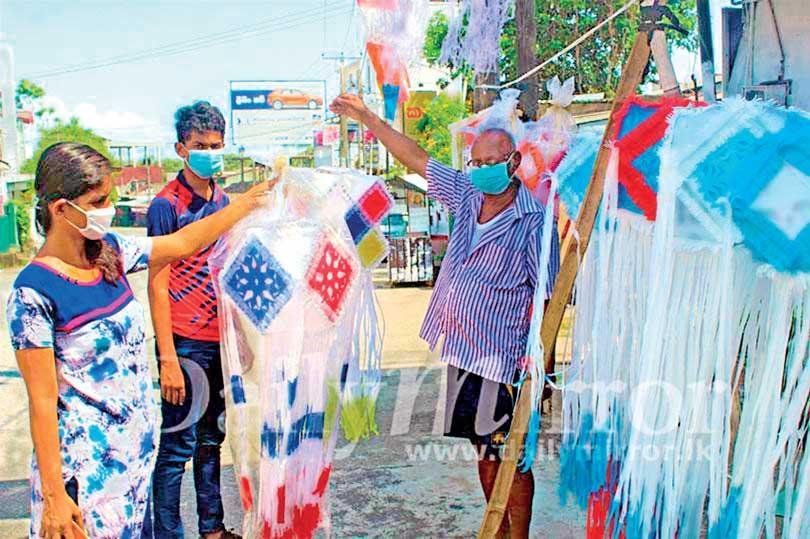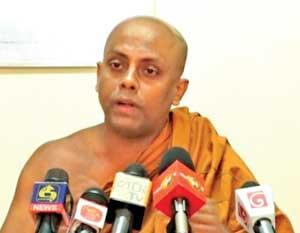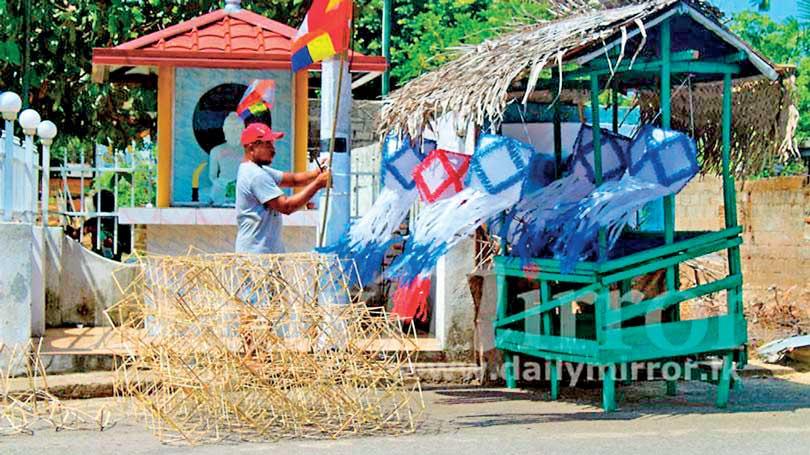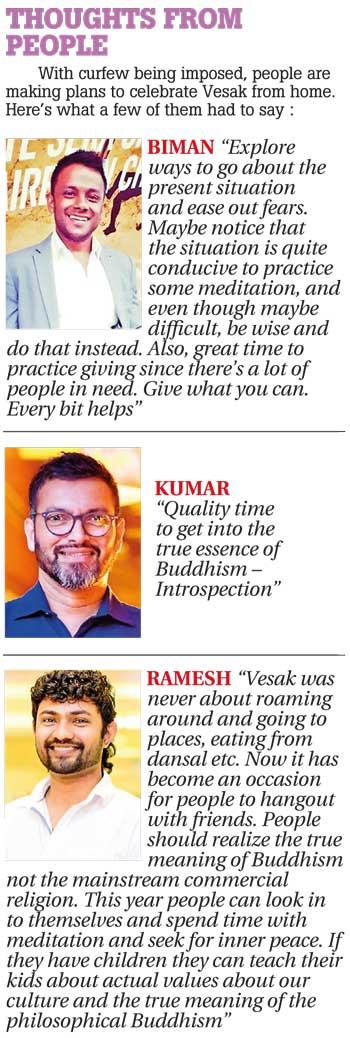07 May 2020 - {{hitsCtrl.values.hits}}

 Vesak, a religious holiday that signifies the birth, enlightenment and death of Gautama Buddha has become an occasion to go sight-seeing and visit dansals. Then there were those who were waiting for the Vesak season to make a living by constructing pandols, large scale Vesak lanterns, and in a way it was an occasion that empowered a community of skilled artists. This year’s Vesak however is bound to be more peaceful than during previous years due to the COVID-19 outbreak. Therefore, many feel that people will be able to reflect on the true values of Buddhism while at home.
Vesak, a religious holiday that signifies the birth, enlightenment and death of Gautama Buddha has become an occasion to go sight-seeing and visit dansals. Then there were those who were waiting for the Vesak season to make a living by constructing pandols, large scale Vesak lanterns, and in a way it was an occasion that empowered a community of skilled artists. This year’s Vesak however is bound to be more peaceful than during previous years due to the COVID-19 outbreak. Therefore, many feel that people will be able to reflect on the true values of Buddhism while at home.
History of Vesak
 Vesakha (the Pali/Sanskrit name for Vesak) has not always been a major celebration in most Buddhist countries, writes Venerable S. Dhammika in his book titled ‘On the History of Vesak’. In Thailand it was only a low-key ecclesiastical holiday until 50 years ago, as was Magha Puja and Wan Asanha Bucha. The big holidays and celebrations were Hindu ones; Songkran, Loi Krathong etc and in the north of the country Inthakin, the water throwing festival and several others. In Sri Lanka, campaigning in the early 1880s to have Vesakha made a public holiday continually failed until Colonel Henry Steele Olcott who embraced Buddhism went to London to petition the British authorities and finally succeeded in 1885. He led the Buddhist revivalist movement and pioneered Buddhist education in the country.
Vesakha (the Pali/Sanskrit name for Vesak) has not always been a major celebration in most Buddhist countries, writes Venerable S. Dhammika in his book titled ‘On the History of Vesak’. In Thailand it was only a low-key ecclesiastical holiday until 50 years ago, as was Magha Puja and Wan Asanha Bucha. The big holidays and celebrations were Hindu ones; Songkran, Loi Krathong etc and in the north of the country Inthakin, the water throwing festival and several others. In Sri Lanka, campaigning in the early 1880s to have Vesakha made a public holiday continually failed until Colonel Henry Steele Olcott who embraced Buddhism went to London to petition the British authorities and finally succeeded in 1885. He led the Buddhist revivalist movement and pioneered Buddhist education in the country.
The book further states that the earliest reference to the Vesakha celebrations in Sri Lanka is from 1st Century BCE. It must have been a major, probably the most major religious festival. In the Mahavamsa, the reign of some kings is measured by how many Vesakhas they have celebrated. The Mahavamsa reports that Sena II ‘celebrated the Vesakha festival with the poor, giving them food and drink and clothing as they desired’. The Chinese pilgrim Faxian (also known as Fa Hsien) spent two year in Sri Lanka at the beginning of the 5th Century. He witnessed one festival of the Tooth Relic during which large brightly coloured depictions of all the Jataka stories ‘looking completely lifelike’ were setup on each side of the roads in the capital.
This is interesting because it could well be an account of how Vesak is celebrated in Sri Lanka today. At main intersections in many cities and towns, large plywood boards with illustrations of Jataka stories or events in the life of Buddha painted on them are erected. Nowadays most of these pandols as they are called, are illuminated with thousands of light bulbs, some of the figures move, and loudspeakers explain each story. In Faxian’s day, they may have been illuminated by oil lamps.
Several decades later, in 1999, the United Nations General Assembly unanimously adopted Resolution 554/155, moved by the late Lakshman Kadirgamar, the then Sri Lankan foreign minister. Vesak Full Moon Day is now accorded as a United Nations Observance Day.
An opportune time to learn the true meaning of Vesak
“Vesak has been commercialized all this while but this time people will be able to learn its true meaning,” opined Venerable Pahiyangala Ananda Sagara Thera, convener of Protect Sri Lanka Organisation.
“In fact this virus has come in as a blessing for all of us to stay at home and engage in religious activities during the Vesak full moon poya day. It has also given us an opportunity to make Vesak lanterns on our own without buying lanterns that come from abroad. You can encourage children to make lanterns and allow them to explore their creativity. Then there are many homeless people out there. So you can look out for them in your neighborhood and give them some food and essentials during these trying times. On the other hand there are many stray animals that don’t have food as well. These are some charity work people could engage in.”
Vesak has been commercialized all this while but this time people will be able to learn its true meaning”



Pics Rekha
Tharangani Fonseka
25 Nov 2024 35 minute ago
25 Nov 2024 2 hours ago
25 Nov 2024 2 hours ago
25 Nov 2024 3 hours ago
25 Nov 2024 3 hours ago